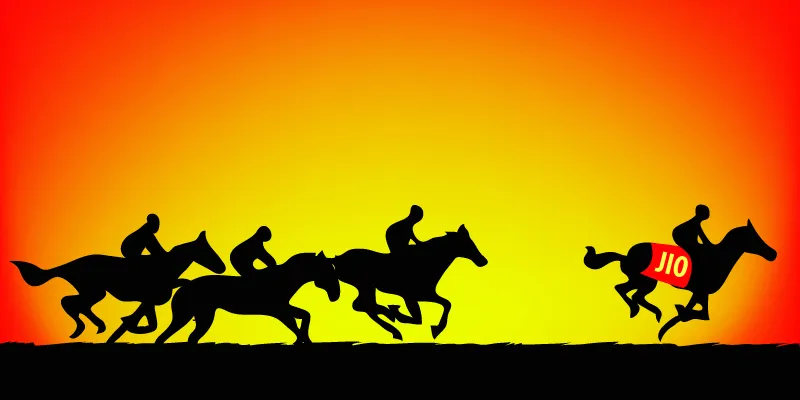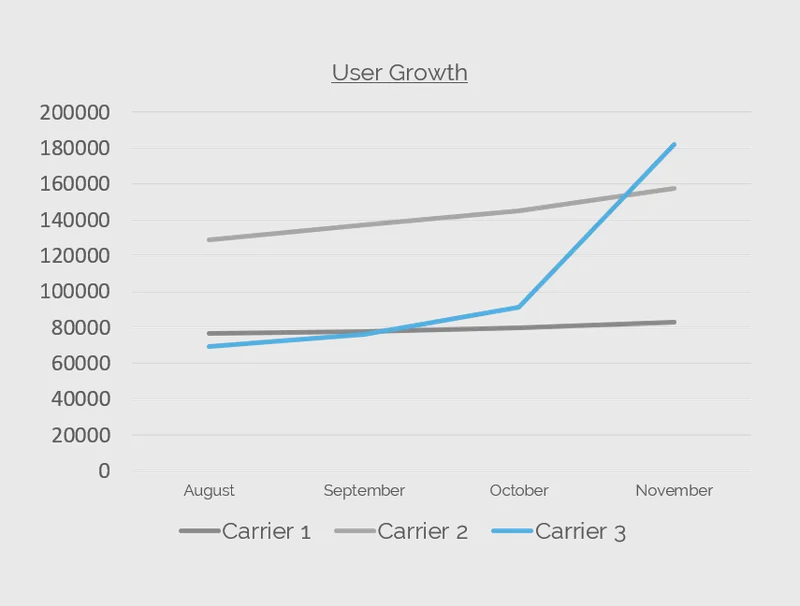Reliance Jio saw the future — others are just playing catch-up
Bundled data with zero-rated services is the future of mobile. Either get with the program or consider your carrier dead.
Forget the critics, the net neutrality advocates, and the pundits. Mobile carriers have — and will continue to offer — consumers an online service that uses data, but not against their data cap because, to be frank, that’s where the money is.
While at one point the battle between carriers revolved around the total allotted data given, the industry has now shifted towards what consumers want to do with that data.

The battlefront is now about finding what consumers want rather than letting them pick and choose. Yes, consumer choice is vital but curating the services that consumers will respond positively to (and providing unlimited access) has shown to be the most lucrative and enticing option for carriers.
While the headlines have revolved around content-based zero-rated services, non-content has seen skyrocketing adoption and growth rates as well (more on this later). While the US is enthralled with services like T-Mobile’s Binge On, who’s to say that unlimited data spent on RCS won’t have the same effect? Or how about a zero-rated personal cloud?
We’re just seeing the tip of the zero-rating iceberg, and the mobile industry is in for one hell of a ride.
Quick primer on zero-rating
Zero-rating allows mobile carriers to offer users a data-consuming service without counting the data used against a data cap, meaning I can stream shows from the likes of HBO without the data counting against my data cap.
A recent example was when Pokemon GO first launched and T-Mobile gave customers a limited time zero-rated service for the app.
Zero-rating: a history
In the days of data caps, it wasn’t so much what you could do with your data but how you wanted to spend it. Sure, you could go and watch a 1080p video on YouTube, and when that ate up a good chunk of your data plan, you played it super safe unless you wanted to incur the wrath of mobile carriers, also known as ‘overage charges’.
Facebook and Twitter sought to address that fear of spending data on their platforms. As early as 2010, Facebook began offering what they called ‘Facebook Zero’, designed to offer users in emerging markets a data cap-free version of the popular social media network. Twitter followed in Facebook’s footsteps four years later with ‘Twitter Access’, partnering with some of the world’s largest mobile carriers to offer barebones (no graphics, images, videos, etc.) Twitter.
However, zero-rating does not have a prodigal history — it has seen its fair share of resistance in a few select markets.
Take for example India, where the Telecom Regulatory Authority (TRAI) has ruled against zero-rated services in principle. Banning “discriminatory tariffs for data services on the basis of content,” the ruling put a dent in Mark Zuckerberg’s campaign to implement ‘Free Basics’ across India with mobile carrier Reliance Jio.
And on the premise of net neutrality, places like the Netherlands, Slovenia, and Holland have all opted to create legislation against zero-rating.
…And carriers don’t care
However, the legislation changes and looming net neutrality threats have done little to hinder mobile carriers from offering zero-rated services.
In the US, T-Mobile started the onslaught of zero-rated data bundles with Binge On, allowing customers to watch Hulu, HBO, and Netflix, among others, free from data cap. Other carriers like AT&T’s Sponsored Data and Verizon’s FreeBee program have replicated T-Mobile’s success and are expanding their zero-rated services repertoire by the day.
Even in India, where the TRAI put a halt to zero-rating on paper, Reliance Jio still found a way to offer consumers a bundled data package that, in essence, includes zero-rated services such as TV streaming.
It’s a very low key disruption, to say the least; after legislators found ways to curb mobile carriers from discriminating services by offering services free of data caps, the carriers did away with the concept and instead offered fixed pricing for unlimited access (bundled into the data plan of course).
Carriers around the world, whether Reliance Jio in India, Vodafone (worldwide), or U-Mobile in Malaysia (among others), have made their choices clear: they will offer zero-rated services and consumers have responded by using more data than ever.
When it happens, it’s absolutely beautiful
So just how much do consumers want it?
Research showed that 20 percent of T-Mobile customers upgraded their services to get zero-rated video. A whopping 89 percent of US wireless customers reported that Binge On would be appealing to them. In short, customers want in.
However, zero-rating isn’t just limited to music or video.
The example of a white-label cloud for mobile carriers can demonstrate the awe-inspiring power of zero-rating.

Can you figure out which one of them offers a zero-rated cloud service? The growth rate between the linear graphs and the hockey stick curve is nearly 10-fold. We’ve found that carrier three’s customers are not only signing up more but also using the cloud far more frequently as well.
And we’re almost certain that other apps being offered through zero-rating must be seeing similar hikes in growth.
Where is zero-rating taking us?
One way or another, carriers will find a way to offer zero-rated data bundles. It’s far too lucrative and popular with consumers not to.
As for where we go from here, we’ve only just started to see the full potential of zero-rating. Zero-rating is perhaps one of the few times we’ve seen mobile carriers bringing OTT services into the fold. And for services such as these, zero-rating means a whole new ball game when working with carriers.
(Disclaimer: The views and opinions expressed in this article are those of the author and do not necessarily reflect the views of YourStory.)







